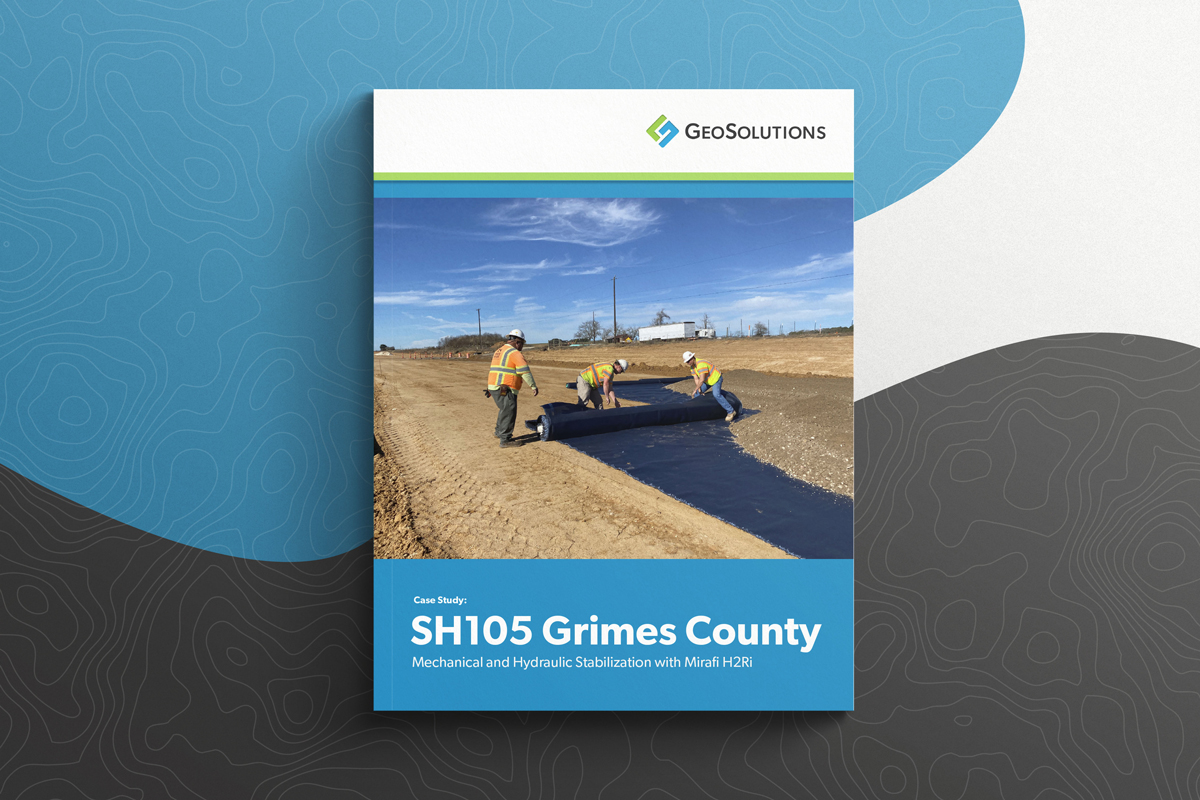
What is a turf reinforcement mat for erosion control?
TRMs or Turf Reinforcement Mats are synthetic-based mats that help prevent soil erosion or loss
on steep slopes and drainage areas, while enhancing the vegetation which grows through them. As
roots penetrate the mat, the root system becomes entangled within the TRM to further prevent soil
loss and strengthen vegetation against major storm or high flow velocity events. Since water
takes the path of least resistance, turf reinforcement mats serve as a shield for your exposed
soil and seed, allowing stormwater to sheet flow over the mat while protecting everything
beneath until it becomes established.
TRMs are rated by their ability to retain soil, enhance vegetation, and resist high velocities in
channel or slope applications. They vary in width, length, and weave pattern to serve a wide array
of applications by type. For critical applications, densely woven TRMs are utilized to provide a
high tensile element to combat extreme water velocities. Earth percussion anchors and/or staples
are required to properly fasten the TRM to the soil until vegetation takes hold. TRMs provide a
green alternative involving enhanced vegetation by means of geosynthetics that is often more
feasible and economical when seeking long-term stability to hard-armor concrete solutions.
Turf Reinforcement Mats are typically used in applications that require protection against high velocity
flows. They can also be effective in applications with limited access for installation. TRMs have been
used effectively in both urban and rural areas such as:
• Steep Slopes
• Shorelines and Riverbanks
• Pipe inlets and outlets
• Agricultural Applications
• Irrigation and Stormwater Ponds
• Surficial Erosion of Slopes
Installing TRMs is an excellent way to reduce or prevent erosion by means of natural vegetation. If a project has limited site access or budgetary constraints, TRMs tend to shine as the optimal solution. When designed, installed, and maintained properly, they are shown to be very effective in providing short-term protection against wave action and high velocity erosion as well as permanent support for vegetation on slopes. TRMs also provide permanent armoring for vegetated ditches, swales, or channels by reducing sheet rill channel drainage by 90%.
• Type of TRM used.
• Surface preparation practices
• Mat installation practices
• Site Conditions/Weather events (pre/interim/post-construction)
The longevity of a turf reinforcement mat will depend on site conditions, environmental events, and the quality of TRM chosen. When properly designed, installed, and maintained, field testing has shown that the design life of a TRM can be north of 75 years.
Turf reinforcement mats are composed of various forms of polypropylene, such as netting, three-dimensional matrixes, weaves, mesh and more. Many TRMs are manufactured on engineered looms that string together various fibers and filaments to create intricate patterns. It is also common for low-velocity TRMs to insert biodegradable fibrous materials such as coconut or straw into the mat.
Although both technologies can be made of geosynthetic materials, erosion control blankets
are typically manufactured to be biodegradable with a short life expectancy. On the other
hand, TRMs are intended to be a permanent approach due to their composition of synthetic
materials. TRMs are typically used in high velocity or critical slope applications,
whereas Erosion Control Blankets are used as a temporary means to establish vegetation.
Erosion control blankets are typically biodegradable, open weave blankets manufactured
from natural fibrous materials such as cotton, straw, wood, and coconut, held together
by synthetic or biodegradable netting. Erosion control blankets, or erosion control mats,
are designed to minimize soil loss and serve as a wicking barrier to protect unestablished
vegetation. Learn more about Erosion Control Blankets here!
Rip rap is one of the most effective erosion prevention methods and is particularly desirable in areas where conditions prohibit the establishment of vegetation. Riprap protects and stabilizes slopes, channels, and streambanks, with high erosive power, slowing the runoff velocity by increasing surface roughness. However, at times, rip rap can be limited by budget and site access. Beyond aesthetics, turf reinforcement mats typically involve a lighter weight installation process; A small crew to deploy, fasten, and vegetate the TRM. It is common for the entire installation to be done without heavy machinery.
The best TRM solution for your project will always start with a feasibility study of your site. Each application will need to be addressed uniquely. The TRM assignment will depend on many factors such as required design velocities and site geometry. Take time to choose the proper TRMs for your site to ensure you get the immediate erosion protection and long-term vegetation reinforcement needed for effective site stabilization.
Have a question, give us a call and put us to the test.
Contact your GEO Pro today to identify which turf reinforcement mat is best for your project needs. Contact Us Now
Always be the first to know about new products, resources, and tools that impact our industry and your performance.
FREE Geosynthetics Case Study

Discover how we provided a cost-effective solution to stabilize soft soils below a highway lane widening area. While eliminating the need to cement stabilize the subgrade and allowed the DOT to keep the same design section thicknesses while implementing a solution to address long-term moisture concerns.